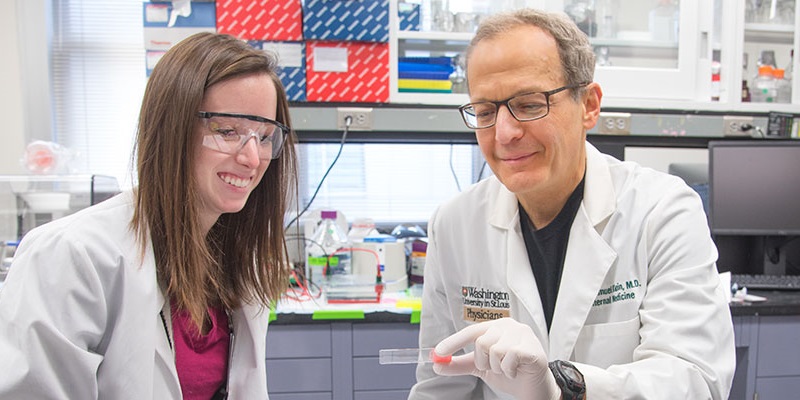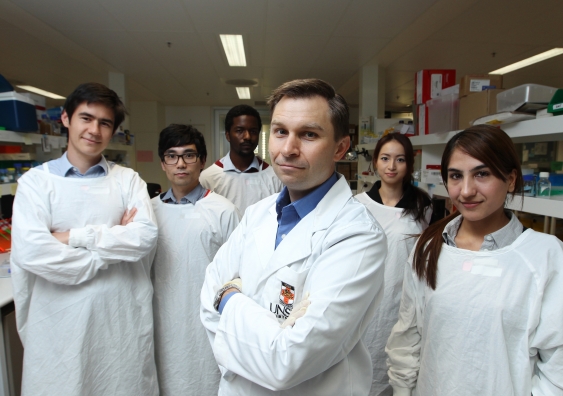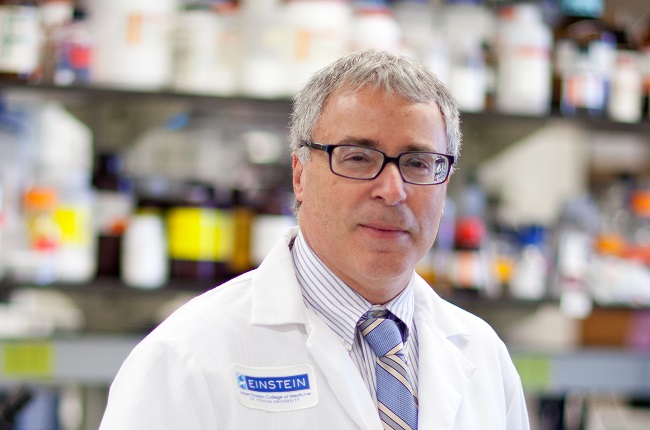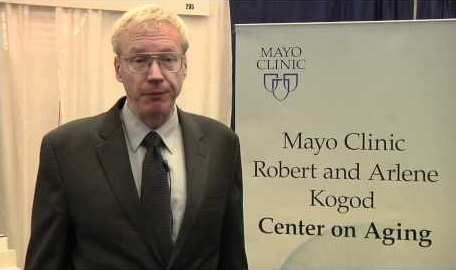Geroscientists Aim to Add Years to Our Lives and Life to Our Years
Summary: A geroscientist is a new breed of a researcher who aims to understand and defeat human aging using a branch of study called geroscience. What these longevity researchers have in the pipeline just may surprise you. [This article first appeared on the website LongevityFacts.com. Author: Brady Hartman. ]
A new breed of a researcher called the geroscientist is striving to end aging as we know it.
And the anti-aging drugs they have in the pipeline might just startle you.
Some geroscientists are leading the drive to take anti-aging medicines out of the laboratory and put them into the clinic. Moreover, the leaders of the geroscience field are conducting clinical trials with FDA-approval and are usually funded by the U.S. Government.
Finding a cure for aging is one of the goals of every geroscientist. After all, aging is the largest risk factor for human disease and is the most significant challenge for medicine in the 21st century. Moreover, governments are well aware of the enormous social impact of an aging society and the economic effects of age-related diseases. To head off the silver tsunami that’s heading our way, government agencies such as the NIH are funding the research efforts of geroscientists.
Private industry has also gotten involved in the geroscience racket. Tech giant Google announced the formation of its ultra-secretive startup Calico Labs who’s corporate mission is to beat back aging. Even staid IBM is entering the life sciences business having recently announced they are studying the human microbiome.

Meet the Geroscientists
A geroscientist is a new breed of a researcher who combines multiple disciplines to study the link between the underlying biology of age-related aging diseases, such as cancer, heart disease, diabetes and Alzheimer’s disease.
Take, for example, Samuel Klein, MD, the Chief of the Division of Geriatrics and Nutritional Science at Washington University in St Louis (WUSTL). Dr. Klein is pictured with a student in our cover photo above and is spearheading the drive to bring anti-aging medicines out of the laboratory and into the clinic. Dr. Klein is currently running a clinical trial of one of the leading life-extension drug candidates, the NAD-boosting drug called NMN (Nicotinamide Mononucleotide).

NAD supplementation has tremendous potential, and at least one geroscientist, Dr. David Sinclair has labeled the drug as a veritable fountain of youth.
Klein and fellow geroscientists at the Washington University School of Medicine in St. Louis are testing nicotinamide mononucleotide’s anti-aging properties in a group of 50 volunteers.
In a recent interview, Dr. Sinclair spoke glowingly about NAD supplementation in general and NMN in particular, when he said,
“This is the closest we are to a safe and effective anti-aging drug that’s perhaps only three to five years away from being on the market if trials go well.”
Related article: Dr. Sinclair interview and Dr. Klein’s clinical trial of NAD-boosting NMN.

Another leading geroscientist is Nir Barzilai, MD shown above. Somewhat of a celebrity geroscientist, Dr. Barzilai is currently running the world’s first FDA-approved clinical trial, testing metformin as an anti-aging drug.
Geroscience and the new Geroscientist
Geroscience is an interdisciplinary field that strives to understand the biology of aging and its relationship to age-linked diseases, with the goal of develop interventions that slow the aging process or minimize age-related diseases and disabilities.
A geroscientist does not only study aging, but he also looks to develop drugs or other treatments that slow the aging process and reduce age-related diseases and disabilities.
Goals of Geroscience
The goal of geroscience is not to merely extend lifespan, but to increase health in later years. These added years of health are called ‘health span.’
By conducting experiments on lab animals, geroscientists have found drugs which not only increase lifespan but also increase the animals health span as well, giving the animal extra years of healthy life.
Why Was Geroscience Created?
That fact the biology of aging plays a role in age-related diseases is not a new concept. However, linking the biology of aging and the study of age-related chronic diseases is a new idea. So unique in fact, that it gave rise to the burgeoning field of geroscience.
The ultimate goal of biomedical research is to improve the quality of human life. Over the past century or so, medical science has been successful in eradicating infectious diseases in the developed world. The advent of antibiotics, vaccinations, and improvements in sanitation and public health have led to a dramatic increase in longevity.
What Does A Geroscientist Do?
The short answer: a geroscientist aims to improve the quality of our lives while making us live longer.
Because medical science lacks a full understanding of the mechanisms of aging, doctors are hampered in their ability to cure age-related diseases. Aging is a complex biomedical problem that is unlikely to yield to traditional investigative techniques. A geroscientist performs several types of research: first, he looks for ways to extend lifespan in laboratory animals to do the same in humans. Second, he investigates the influence of random damage that occurs throughout our lifespan, and how it influences aging. Third, the geroscientist aims to develop drugs or other treatments that extend the lifespan and healthspan of the human race. All of these research avenues are guided by the goal of developing therapies that promote healthy aging in mankind. Geroscientists conduct interdisciplinary experiments to understand basic aging mechanisms and how they contribute to age-related diseases.

Geroscientists and Mice
Why do geroscientists try to increase the lifespan of mice?
The simple answer is that geroscientists have noticed that extending lifespan of mice and other lab animals also increases their health span. In the lab, a geroscientist uses lifespan merely as a surrogate to measure health improvements. A mouse that lives longer is generally in better health.
The Geroscience Hypothesis
The basic tenet of geroscience, known as the geroscience hypothesis, is that aging is malleable. In other words, nearly every geroscientist believes that the rate of aging can be changed. Knowing that aging is the primary risk factor for most of the diseases and conditions plaguing mankind, geroscientists firmly believe that by slowing aging, they can significantly reduce age-related diseases. Geroscientists feel that medical science is inefficient. The traditional approach of mainstream medical science is to address diseases one at a time. On the flip side, geroscientists can cure more diseases by rejuvenating the biology of aging, and thus get more bang for the buck than mainstream medicine.
The Geroscientist vs. Mainstream Medicine

The key difference between geroscience and traditional medicine is complexity. In conventional medicine, treating infectious diseases and genetic disorders is relatively straightforward. On the other hand, in the field of geroscience, the chronic diseases of aging are complex. Because the diseases are multifactorial, geroscientists want to attack all the chronic diseases of aging at the same time.
For example, leading geroscientist James L. Kirkland, M.D., Ph.D. recently published a list of age-reversing senolytics. In a review article published in the Journal of the American Geriatrics Society, a team of Mayo Clinic geroscientists said that senolytics could be “transformative” by preventing or delaying the chronic conditions of aging as a group instead of one at a time.
Kirkland didn’t discovery senolytics all by himself; other geroscientists have advanced the field, including geroscientist Judith Campisi, an expert on senolytics who said,
“If chemists can come up with drugs that can kill senescent cells in humans, we think this is going to revolutionize modern medicine”
Geroscientists Believe Diseases Hide Behind Many Masks

Geroscience solves a glaring problem in medicine. Namely modern medicine appears to be inadequate in addressing diseases one at a time. Conventional medical scientists focus on fighting diseases one at a time. Doctors try to reduce specific risk factors for different diseases such as lowering blood sugar to control diabetes, removing amyloid deposits to treat Alzheimer disease and lowering cholesterol for cardiovascular disease.
Unfortunately, they are often late to the party, because the scientific evidence shows that overt disease often becomes apparent only after other elements are present. Usually, these other elements are a changed physiological environment and the receptive niche provided by an aged body. In other words, conditions like age-related chronic inflammation or weakened immune system may set the stage for these chronic diseases.
For example, cancer often strikes us in our 60s and 70s. Doctors usually explain the time lag with the rationale that it takes a long time for all the necessary genetic mutations to accumulate in any given cell. However, this explanation fails to explain the occurrence of cancer in mice at a very young age, as most mice develop cancer by the age of 2 years. Mice and humans have comparable DNA mutation and repair rates. As the conventional thinking goes, cancer is caused by accumulating DNA damage. Geroscientists offer a better explanation, based on the observation that in both mice and men, cancer strikes when the individual is well past midlife, a time when aging animals become frail and lose resilience.
Ask a geroscientist, and she will offer a better explanation. She might point out the observation that in both mice and men, cancer strikes when the individual is well past midlife, a time when aging animals become frail and lose resilience.
Sufficient evidence supports this hypothesis, especially for chronic inflammation. The results of a new anti-inflammatory drug trial came out in the middle of this year. The researchers announced that by reducing chronic inflammation, the drug lowered heart attacks by 25% and cancer by 50%.
Improving Mainstream Medicine
The traditional medical community is primarily focused on the inefficient practice of trying to cure one disease at a time. The geroscientist offers a more efficient approach.
Traditional researchers – those who are not hip to geroscience – focus on preventing, curing, or managing one disease at a time. This trend is reflected at the level of the clinic, academia, and even government funding. The focus on one disease at a time has many adverse effects; for example, clinical trials usually recruit patients who are in pristine condition, excluding those suffering from diseases other than the one being examined. Furthermore, clinical trials exclude older persons. The upshot of all of this is that clinical trials effectively eliminate the group of people who would most benefit: comorbid older adults.
Treating Many Diseases Simultaneously
Simple logic tells us comorbidities are caused by aging because aging is a major risk factor for most chronic conditions. Geroscientists have embraced the concept that aging is the cause of comorbidities and focus on preventing and curing all chronic diseases at the same time.
Fortunately, the research results published by geroscientists is leading to a change in the attitude of mainstream medicine. Mainstream researchers are starting to realize that addressing disease-specific factors such as blood sugar, cholesterol, and amyloid deposits is not sufficient. Furthermore, most older adults, have multiple chronic conditions at the same time, called comorbidities, such as type 2 diabetes and heart disease.
‘Nothing Can Stop Aging’
Physicians have known for centuries that aging is the major risk factor for dysfunction and disease but feel that nothing can be done about it. This fallacy has persisted for centuries and continues to haunt nearly every geroscientist.
Chronologic age, or the number of years a person has been on the planet, cannot be changed. However, everyone does not physically age at the same rate, leading to a different physiological age. This mismatch between chronological age and physiological age is driven by lifestyle, genetics and the environment. In general, people who have a healthy, balanced diet, don’t smoke, exercise and avoid excessive stress tend to have a better physiological makeup, even in old age. These observations imply that the process of aging is intrinsically malleable, and adds weight to the geroscience hypothesis.
Geroscientist’s Report Card
Geroscientists are not merely researching the aging of fruit flies; they have made tangible progress towards creating lifespan-enhancing drugs for humans.
In laboratory animals ranging from yeast to mice, the geroscientist can delay aging with three types of interventions, including calorie restriction, genetic manipulation, and drugs. Researchers have known for nearly a century that calorie restriction extends the lifespan of mice, and more recently, of monkeys as well. Genetic manipulation also extends lifespan, in fact, geroscientists have identified more than 700 genes that do so. Lastly, drugs also extend lifespan in lab animals, including metformin, and rapamycin. Even resveratrol extends lifespan in mice, albeit under metabolically stressed conditions.
And geroscientists don’t just invent lifespan-extending drugs. Some are researching the basic mechanisms of aging to figure out what makes us grow old. In fact, just this year a team of researchers discovered a genetic clock that controls how our brain ages. Right after that, another group discovered an epigenetic aging clock that controls how our body ages.
Add Life to Your Years

What’s the point of living a few extra decades, if those decades are spent in poor health? This is the reason that geroscientists make it their goal to create interventions that extend both lifespan and health span.
Geroscientists have already established that certain interventions such as calorie restriction, genetic manipulation, and drugs extend lifespan.
However, what most people do not realize is that these interventions also improve health span, most of the time. In other words, these lifespan-extending interventions also enhance resistance to disease as well as improving the physiology of the animal.
While the interventions delivered thus far only improve the condition of lab animals. Geroscientists have made significant progress in understanding the basic biology of aging, are a poised to deliver lifespan-extending drugs to humans.
Improve Stress Resistance
Improving health is a complex undertaking and should not be equated with the absence of disease. As we age, we lose resilience and become more susceptible to disease. This age-induced loss of resilience is caused increased physiologic frailty which decreases our ability to withstand stress.
A geroscientist defines resilience as the body’s ability to return to homeostasis in response to a stressor. There are many flavors of stress, including, the stress caused by disease or, the stress caused by medical treatments, such as chemotherapy, surgery, and anesthesia. As we age our frailty increases and our resilience decreases making it easier for other diseases or medical treatments to further damage and weaken our bodies. For example, being bedridden for a long period is a nuisance to a young person, but could be deadly to an older one. The upshot of all of this is that geroscientists aim to improve our health by improving frailty and resilience.
Questions That Plague Geroscientists
In summary, geroscience provides a new way of attacking an old problem. However, many questions still pester many a geroscientist. For example, what are the molecular and cellular bases for the intersection between geroscience and chronic disease? As well, what conditions that make the biology of aging the major risk factor for chronic disease? If geroscientists can answer these two questions, they will be able to postpone age-related diseases disabilities in one fell swoop.
The Future of Geroscience
In the near future, Aging biology and geroscience are likely to grow in importance. Impressive scientific advances in the twentieth century have virtually obliterated many infectious diseases. As well, mainstream medicine has made significant advances in detecting, preventing, and treating many chronic and complex disorders. Despite the advancements made by mainstream medicine, geroscientists want to mount a coordinated attack on the comorbidities of older adults. Advances in modern medicine are allowing people to routinely live into their 80’s and beyond. Unfortunately, these senior adults will be inevitably plagued by chronic diseases and disabilities. The goal of the geroscientist is to develop drugs that delay these chronic diseases and disabilities.
The field of geroscience has made tremendous advances in understanding the biology of aging, but much work remains. The field has born fruit in the form of interventions that extend the lifespan of laboratory animals. The current focus of geroscientists is to bring these drugs out of the laboratory and into the clinic.
Show Us Some Love
- One click helps us spread the word – Share this post on your social media account and help your friends. It only takes one click on any of the social media links on this page.
- Follow us on social media – For weekly articles, follow us on Reddit | Google+.
- Tell us what you think – Scroll down and comment in the section below.
References & Additional Geroscience Resources
Cover photo: Pavel Chagochkin.
Marina N. Bolotnikova. Anti-Aging Approaches. Harvard Magazine, September-October 2017 Issue. Retrieved 29 Sep. 2017. Available Online.
U.S. National Library of Medicine. Clinical trial number NCT03151239 for “Effect of NMN (Nicotinamide Mononucleotide) Supplementation on Cardiometabolic Function.” Available online at ClinicalTrials.gov
Benjamin Wallace. “An MIT Scientist Claims That This Pill Is the Fountain of Youth.” 2016. New York Magazine. Available Online.
Disclaimer
Diagnosis, Treatment, and Advice: This article is intended for educational and informational purposes only and is not a substitute for professional medical advice. The information and opinions provided herein should not be used during any medical emergency or for the diagnosis or treatment of any medical condition. Experimental therapies, such as NMN, rapamycin, and metformin for anti-aging carry a much higher risk than FDA-approved ones. Consult a licensed and qualified physician for the diagnosis and treatment of any and all medical conditions. Call 911, or an equivalent emergency hotline number, for all medical emergencies. As well, consult a licensed physician before changing your diet, supplement or exercise programs.
Photos, Endorsements, & External Links: This article is not intended to endorse organization, companies, or their products. Links to external websites, mention or depiction of company names or brands, are intended for illustration only and do not constitute endorsements.

The pics are messed up